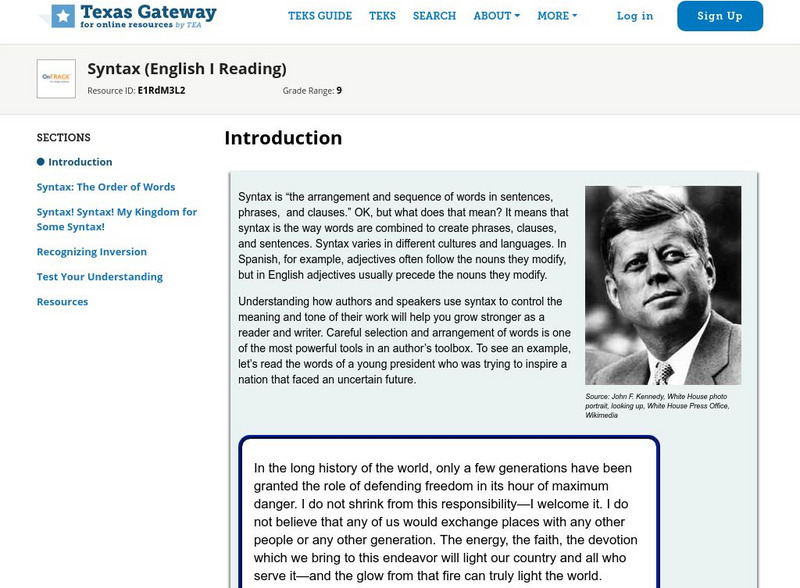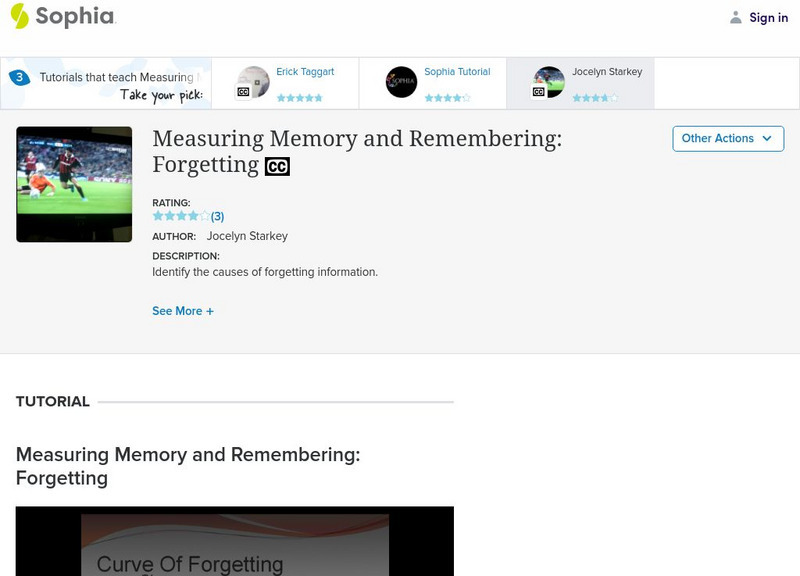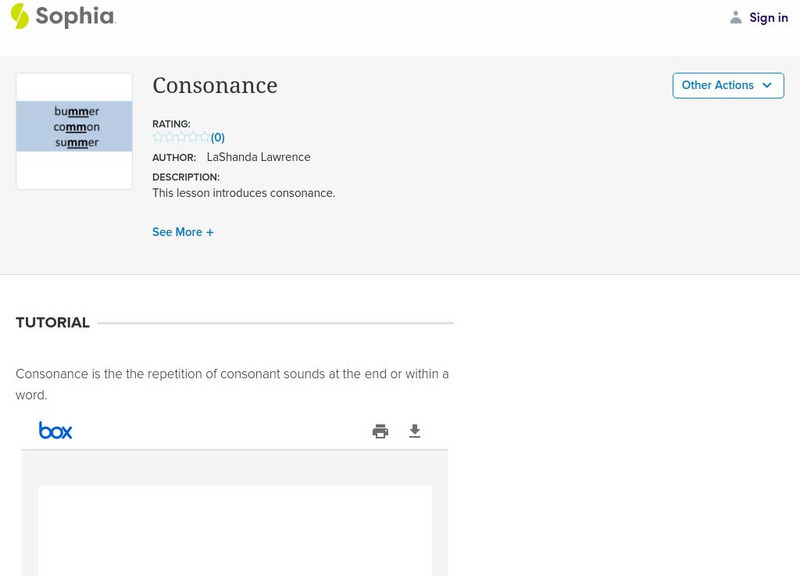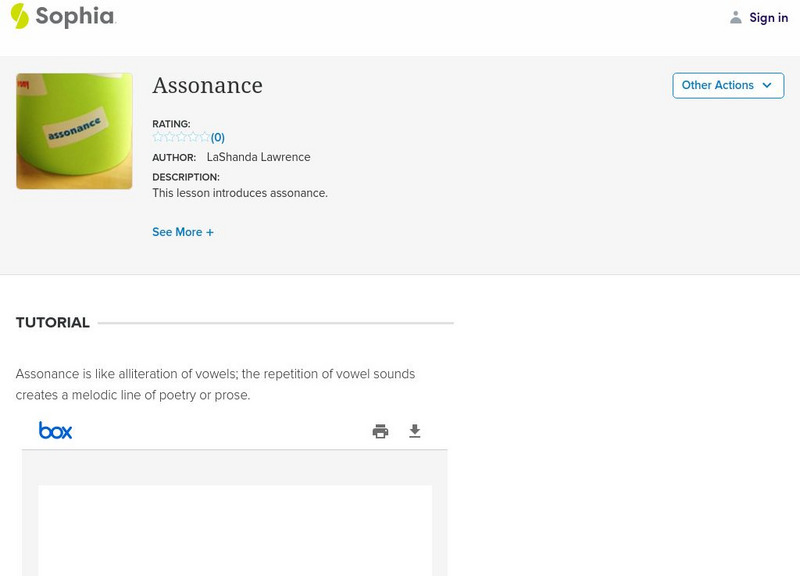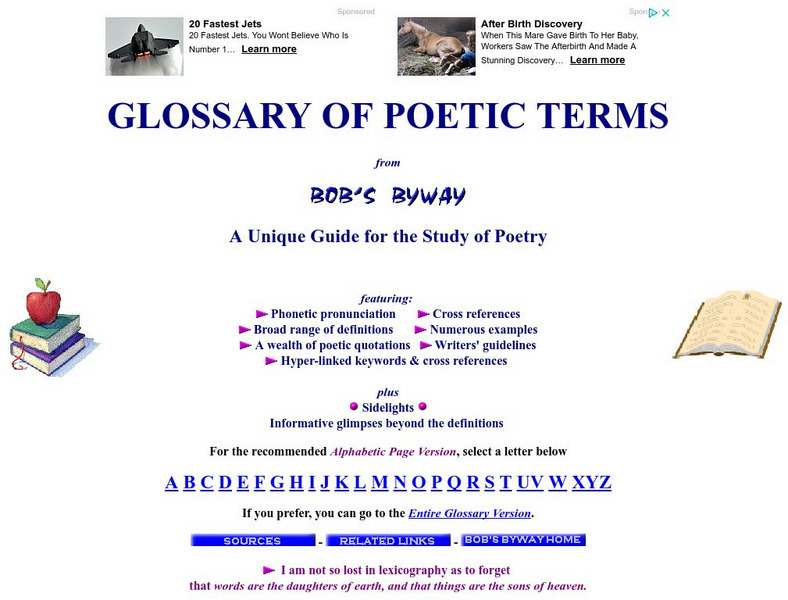Read Works
Read Works: Predicting Kindergarten Unit: Repeated Text
[Free Registration/Login Required] Lesson uses The Very Busy Spider by Eric Carle to teach students predict the outcome of a story with textual repetition. Ideas for direct teaching, guided practice, and independent practice are...
Other
Lit Charts: Stream of Consciousness
Explains what is meant by the term 'stream of consciousness' and where it originated. The characteristics of stream of consciousness are described, its history in literature, how it differs from 'interior monologue,' and examples of its...
CommonLit
Common Lit: Columbus
CommonLit.org is a wonderful resource to use in a Language Arts classroom. Each story, poem, or article is accompanied by guided reading questions, assessment questions, and discussion questions. In addition, students can click on words...
Love To Know Media
Your Dictionary: "Gift of the Magi" Literary Terms
This article focuses on literary terms for the "Gift of the Magi" including the narrator, characters, climax, repetition, resolution, setting, irony, theme, and symbolism.
Texas Education Agency
Texas Gateway: Syntax (English I Reading)
This lesson focuses on syntax; All writers and speakers choose their words and the way they arrange them to make their work more powerful. You will see this in a segment of President Kennedy's speech and then in poetry; poets in...
Code.org
Code.org: Cs Fundamentals: Lesson 10: Loops With Rey and Bb 8
Building on the concept of repeating instructions from "Getting Loopy," this stage will have students using loops to help BB-8 traverse a maze more efficiently than before.
Code.org
Code.org: Cs Fundamentals: My Loopy Robotic Friends
A reintroduction to loops, using the set of "robot" programming instructions. Learners will develop critical thinking skills by looking for patterns of repetition in the movements of classmates and determining how to simplify those...
Code.org
Code.org: For Loop Fun
We know that loops allow us to do things over and over again, but now we're going to learn how to use loops with extra structure built right in.
Ted Nellen
Cyber English (By Ted Nellen): Anaphora
This is a glossary entry for the term "Anaphora" including the definition, examples, and a link to more information.
ArtLex
Art Lex: Harmony
This site from Artlex provides a brief but effective definition of the Principle of Design known as Harmony. There are links to other terms within the definition as well as quotations by Cezanne, Seurat and Ingres.
Other
Design and Colour
A site by watercolor artist John Lovett. He describes the Elements of Art and Principles of Design and gives tips and techniques for watercolor painting and for composition.
Sophia Learning
Sophia: Measuring Memory and Remembering: Forgetting
This lesson will explain forgetting and describe the strategies used to avoid it.
University of Virginia Library
Prism: "We Shall Overcome" Visualization
[Free Registration/Login Required] See the results of how users have Dr. Charles Tindley's "We Shall Overcome." Details showing emotions are blue while inferences are red, and meaningful repetition is green. Click on any word to see the...
Other
Bob's Byway: Glossary of Poetic Terms
Calling itself "unique," Bob's is easy to use, with cross-links throughout, phonetic pronunciation guides when necessary, and many examples and quotations. Click on the letter and scroll for the word.
CK-12 Foundation
Ck 12: Biology: Science Experiments
[Free Registration/Login may be required to access all resource tools.] Introduction to scientific experiments.
Sophia Learning
Sophia: Emphasis: Repetition
This lesson discusses how to add emphasis through repetition. This tutorial lesson shares a short slideshow with the lesson's content.
Other
Definitions of Propaganda Techniques
Part of a WebQuest called Persuasion Quest, this page gives simple definitions for 8 different types of propaganda techniques.
National Gallery of Art
National Gallery of Art: Wallovers
A wallpaper-designing program that turns your freehand drawing into repetitive patterns. A good introduction to repetition as a design principle and to grid systems.



